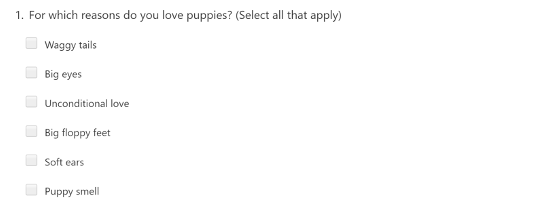Self-report techniques and design & Types of data
1/22
Earn XP
Description and Tags
Name | Mastery | Learn | Test | Matching | Spaced |
|---|
No study sessions yet.
23 Terms
Name 4 types of data.
Quantitative
Qualitative
Primary
Secondary
What is quantitative data?
Data is expressed numerically.
Eg. the number of words PPs were able to accurately recall in a memory test.
Evaluating quantitative data - strengths and weaknesses.
Strengths -
More objective and less open to bias.
Easier to analyse than qualitative.
Weaknesses -
Lacks detail.
May not represent real feelings.
What is qualitative data?
Data that is expressed in words. The thoughts, feelings and opinions of PPs.
Eg. the transcript of an interview, diary notes from a counselling session.
Evaluating qualitative data - strengths and weaknesses.
Strengths -
More subjective and therefore rich in detail.
Higher external validity than quantitative.
Weaknesses -
Hard to analyse.
The interpretation is often subjective and may be open to researcher bias.
What is primary data?
Original data is collected specifically for the purpose of the investigation BY the researcher themselves.
Arrivers straight from the PPs.
Evaluating primary data - strengths and weaknesses.
Strengths -
Fit for purpose.
Authentic and less likely to be misinterpreted or used for the wrong reason.
Weaknesses -
Time consuming to collect.
Can be expensive and requires a lot of effort.
What is secondary data?
Data that has been collected by someone else, that already exists before the investigation has been planned.
Has usually been subjected to statistical testing and the significance is already known.
Evaluating secondary data - strengths and weaknesses.
Strengths -
Inexpensive.
Less effort required on the researchers part.
Weaknesses -
Much variation to the quality and accuracy of the data.
Can be outdated or incomplete.
Could be somewhat irrelevant to the field of study.
What are questionnaires?
Set of written questions - designed to collect information.
Can discover what people think or feel (no guessing work like observations).
Always pre-determined (structured).
Can provide either qualitative data or quantitative data.
The importance of writing good questions.
Clarity -
Do not use double negative questions (are you against banning capital punishment?)
Do not use double barrelled questions (do you suffer from sickness and headaches?)
Bias -
Do not use leading questions, which make one answer more attractive.
Analysis -
Questions need to be written so they are easy to analyse.
Designing good questionnaires.
Filler questions - include some irrelevant questions to distract the PP from the purpose of the questionnaire.
Sequence for the questions - start with the easy ones.
Pilot study - test the questions on a small group of people.
Open VS Closed questions.
Open -
Does not have a fixed range of answers.
Tends to produce qualitative data.
Hard to analyse.
Closed -
Offers a fixed number of responses.
Tends to produce quantitative data.
May lack depth and detail.
What is a likert scale?
Respondents are required to indicate their agreement or disagreement with a statement using a scale of usually 5 points.

What is a rating scale?
Respondents have to identify a value that reflects the strength of their feeling on a topic.

What is a fixed choice option?
Includes a list of possible options and respondent choose which are applicable to them.

Evaluating questionnaires - strengths.
Once designed, can be used quickly and cheaply.
Respondents may feel comfortable to reveal private information.
Ope questions can provide unexpected answers which can lead to further research.
Reduces experimenter bias VS interviews.
No special training needed to hand out questionnaires.
Evaluating questionnaires - weaknesses.
Sample can be biased due to who is willing to fill it out.
Questionnaires using closed questions limit responses.
Can take a lot of time to design.
Types of interviews.
Structured
Unstructured / Clinical
Semi-structured
Structured interviews
Pre-determined questions, essentially a questionnaire but face to face.
There is strictly no deviation from the original questions.
Unstructured / Clinical interviews
New questions are developed during the course of the interview.
Interviewer may begin with general aims and a few pre-determined questions but subsequent questions develop on the basis of the given answers.
Semi-structured interviews
Usually the type of interview we see in everyday life eg. job interviews.
There is a list of questions that must be asked, but interviewer is able to ask follow up questions based on the responses given.
Pros and Cons of types of interviews.
Structured interview | Unstructured interview |
+ Can be easily repeated because the questions are standardised. | + More detailed information can be obtained |
+ Different people can be compared due to the standardised questions | - Requires interviewer with more skill because the interviewer has to develop more questions |
+ Answers are easier to analyse due to being predictable | - Questions may lack objectivity due to the quick nature of creating the questions |
- Comparability difficult if interviewer behaves differently or different interviewer | - More expensive due to the need for experienced interviewer |
- Interviewer bias | - Interviewer bias |